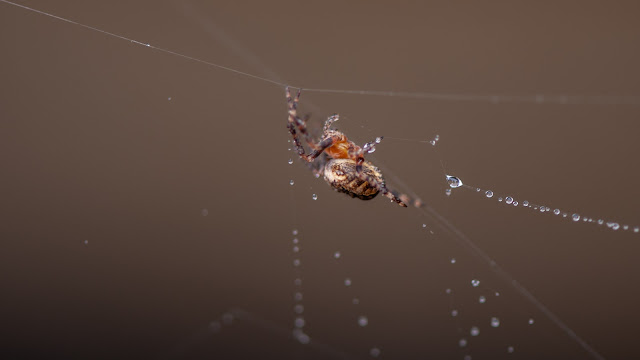background check
In some forms of photography, it's desirable to have your entire image in pin-sharp focus. Landscapes and seascapes are good examples of this, and to achieve this look takes the use of smaller apertures and maybe even focus bracketing of images, involving shooting a series of images at varying focal points and then blending them together later.
Sometimes though you might want to concentrate interest on a particular subject in which case you might want to blur out the background. Portrait and macro photography are good examples of this.
The amount of background blur is dependent on a number of things. Your lens's focal length together with largest aperture, along with the distance to your subject and then the background. Less important is the size of your camera's sensor, with smaller sensors rendering more depth of field.
So, a longer lens with a wide aperture and setting up close to your subject is the way to go.
 |
| Nikon D700, Micro-Nikkor 105mm f2.8G, Raynox DCR250 1/640th of a second at f3.2 handheld |
I shot this image on my full frame sensor Nikon D700 with my 105mm f2.8 macro lens. I also attached my Raynox magnifier to enable me to get really close to the subject - the wild flower. The combination of all these factors resulted in the image you see below, one with a razor-thin depth of field and gloriously blurred out background.
------------------------------
I've got a number of videos planned based around legacy Nikon and Nikkor gear. If anyone is interested then the first one below is all about my first "proper" digital camera:

Comments
Post a Comment